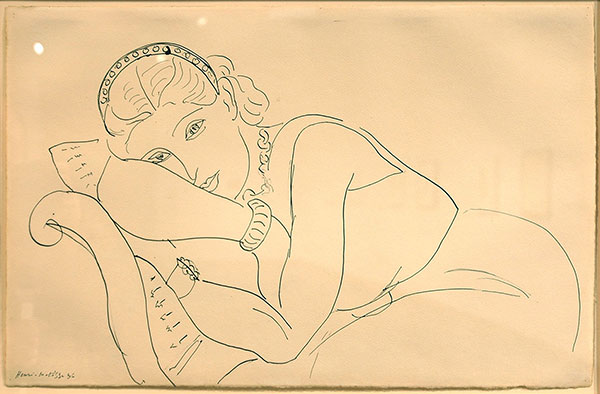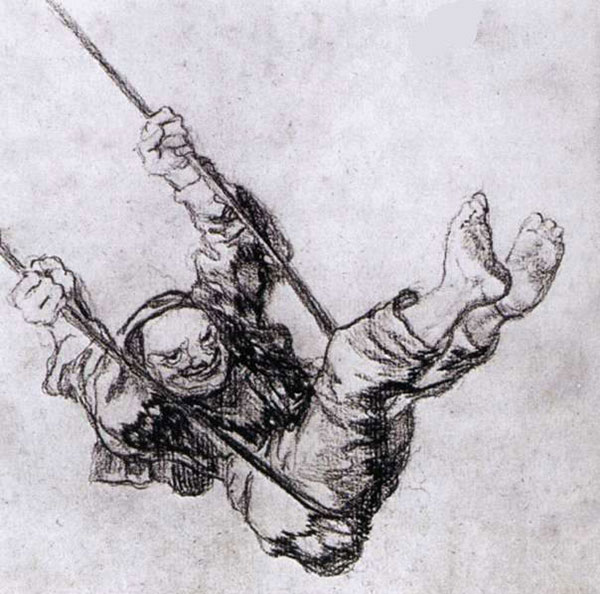You may hear it said that artists hate to draw hands, and I don’t think there is any part of the human body that is more challenging to draw well than the hands. Of course for that very reason artists who relish a challenge love to draw hands. In the drawing classes I supervise, I have often noted that beginning artists tend to draw hands (and feet) too small, while the most accomplished artists often draw hands disproportionately large.
Hands are complicated structures capable of an incredible range of pose and expression. The fingers are the most sensitive as well as the most dextrous part of the body – paragons of both feeling and action. To watch the fingers of a great pianist, guitarist, or violinist, to see the expression that a master actor or painter or dancer conveys through the hands and fingers, is to experience the most profound grace the human being can embody.
Let’s look at images of hands in works of painting, sculpture, cinema and photography. Throughout this post click on the photos to go to the websites where I found them, and click on the titles of works in the commentary to see full versions where I show details, or to find more information about the works pictured.
Leonardo’s hand of a Lady with an Ermine almost makes you feel the sleek fur and impulsive muscularity of the animal she strokes.
Botticelli’s Madonna of the Magnificat invokes the holy with beatific faces and delicate hands, portraying the Virgin as scribe.
Michelangelo’s David has enormous hands with incredible detail of veins and sinews, an image of power in repose.
The way Michelangelo carved with a chisel, Dürer carved with black and white line on toned paper.
Caravaggio’s Fortune Teller, like all of his work, is so vivid you feel the characters are alive before you. The hands are as strikingly present as the faces. Look at the palm-reader’s seductive grasp and stroke.
The Hamsa is a hand-shaped amulet for protection against the evil eye, commonly found in many variants throughout the Middle East and North Africa. The symbol has been around since before the era of monotheistic religions, but it survives in Judaism as the Hand of Miriam, in Christianity as the Hand of Mary, and in Islam as the Hand of Fatima. “Hamsa” means five in Arabic, and it represents five fingers, but it is usually abstracted to be symmetrical, so it appears as a hand with three fingers and two thumbs. As a symbol surviving from antiquity and remaining popular today, it shows the persistence of the idea of the hand representing spiritual power and blessing. (Indeed images of hands are among the earliest surviving human artistic representations.)
In Hinduism and Buddhism, symbolic hand positions called “mudras” are an important aspect of both ritual practice and the iconography of sacred art. There are hundreds of defined mudras, different lists of them for different traditions and disciplines. The gesture of the Buddha figure above is the Abhaya Mudra, the fear-dispelling gesture.
Classical Indian dance forms such as Bharata Natyam have their own collections of mudras, essentially a form of sign language for telling a story in dance. (Some dance mudras are demonstrated in the set of photos above.)
Buddha figures also have a whole set of prescribed mudras that represent things like charity, understanding, and asceticism. The right hand of the buddha above is making the sign of debate or discussion.
The Airport in New Delhi features a public sculpture depicting a variety of traditional mudras. The one shown above is called prana mudra by yogis. In yoga, mudras are like asanas (yoga poses) for the hands. This one is performed to promote the flow of vital energy throughout one’s body.
Mudras are not exclusive to the religions of Southern and Eastern Asia. Christ is frequently depicted giving a gesture of benediction very similar to the hand positions seen in Hindu or Buddhist figures.
One explanation of this gesture is that the three upraised fingers represent the Trinity, while the two lowered fingers represent the dual nature of Christ as man and God. (Eastern Orthodox representations of Christ feature a different hand position.)
Hands are potent and adaptable symbols in sacred art. Michelangelo’s Creation of Adam shows the vigorous hand of God transmitting the life force to the weaker hand of Adam.
Grünewald’s Isenheim Altarpiece features on one panel the tortured hands of the crucifixion, and on another the raised palms of the luminous Christ rising from the grave.
The exquisite drawing above is a preparatory sketch for the Heller Altarpiece, another great hinged triptych painting. The left hand holds the orb of the world, and the right hand crowns the Virgin.
Let’s get a little more secular now. The illustration above is one of many great pictures in the pop anthropologist Desmond Morris‘ Manwatching: A Field Guide to Human Behavior. It shows “baton signals”, gestures that “beat time to the rhythm of spoken thoughts.” Hand gestures can do as much to inflect human speech as can tone of voice.
Bridgman‘s Book of a Hundred Hands is a whole collection of an artist’s acute observations about hands, presented in both words and sketches. This is the kind of book that can help one learn how to notice things.
Burne Hogarth had a way of expressing the power of motion through a detailed understanding of anatomy.
Hogarth may be best known for transforming the style of superhero comics. His anatomy books are among the best for artists because they depict anatomical structures not in the inert diagrams of typical textbooks, but in vigorous action.
The impressionist and post-impressionist artists tried to show that everyday realities, like these rough peasant hands, can be as full of wonder and beauty as anything holy or heroic.
The discovery of touch between a mother and child is surely as powerful a human experience as there is. Lots of artists are good at depicting mystery or vehemence, but it takes rare sensitivity to portray such a subtle moment as Cassatt does in this picture. Look at how the child’s touch to the mother’s face is returned as she holds one of the child’s hands and one of his feet in her hands.
Schiele shows the exciting narcissism of youth in his pout, his cockscomb hair, and his dramatic fingers.
This Escher print perfectly distills the unity of hand, eye, and playful mathematical mind that this artist cultivated through all his work.
The fist is the ultimate expression of defiance and determination.
Let’s look at some photographic explorations of hands. An artist’s essence is as much in his hands as in his face. Don’t Aubrey Beardsley‘s long, long fingers look like the only fingers that could have produced his efflorescence of flamboyance in black and white?
And here is Georgia O’Keefe, austere and sensuous at the same time.
Man Ray‘s abstracting eye glamorizes the tactile.
Emmet Gowin sees the mystery in the everyday, the family, the land.
For Bill Brandt, the body is monumental, towering.
John Coplans‘ sole subject is his own aging body, seen with the sharp eye a naturalist might direct on some taxonomic oddity of nature.

Still from “Nosferatu, eine Symphonie des Grauens”, 1922 film directed by F. W. Murnau, with Max Schreck
The cinema may be the perfect art form to explore the image of the hand. Nosferatu‘s vampire has rodent teeth, a rigid posture, and the talons of a raptor.
In The Hands of Orlac, a pianist receives a transplant – the hands of a murderer.
In the magical realist classic Night of the Hunter, Robert Mitchum plays a homicidal preacher with LOVE and HATE tattooed on his knuckles.
I’ll conclude this post with a selection of works by Auguste Rodin, an artist who grasped all the expressive possibilities of the human hand, and explored in his work many of the themes we’ve seen in the work of other artists above.
Could a face express such anguish? Compare this hand with those in Grünewald’s crucifixion, or with Burne Hogarth’s contorted hands.
This hand and the face combine to show us the mournful resignation of a man accepting his own death. (This is a detail from the multi-figure “Burghers of Calais“. The story it tells is explained at the link.)
Here Rodin shows us the hand of God as the hand of an artist like himself, modeling living figures out of clay. The position of this hand is very similar to that of the figure just above it,
Both this work and the next are composed of two right hands. A left and a right hand coming together are the prayer of one. Two rights shows the encounter of two individuals. The “Cathedral” is the potent egg-like space that is created in between the hands of two people who join to dance together.
There is profound power in this gentle contact. These hands are not grasping, clinging, or controlling. Each hand remains a free individual, with all its senses tuned to the mystery of touching the other.
If you know anything of the story of Rodin and his muse, protegée and fellow sculptor Camille Claudel, you may doubt whether Rodin ever achieved such sensitivity in his own life. But even if he did not, for me, he manages to express it in these moving sculptures.
Below, Rodin’s assemblage of a life-cast of Claudel’s sad and delicate head with a cast of the oversized hand of a figure from the “Burghers of Calais”, four images up.
For the artist, the hand is the extension of the mind. Eyes and thoughts reach out like fingers, touching the world, exploring it, shaping it.

























































































































































































